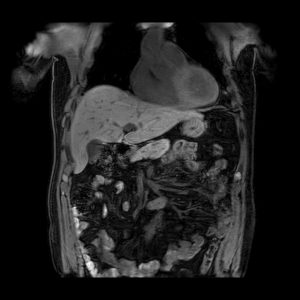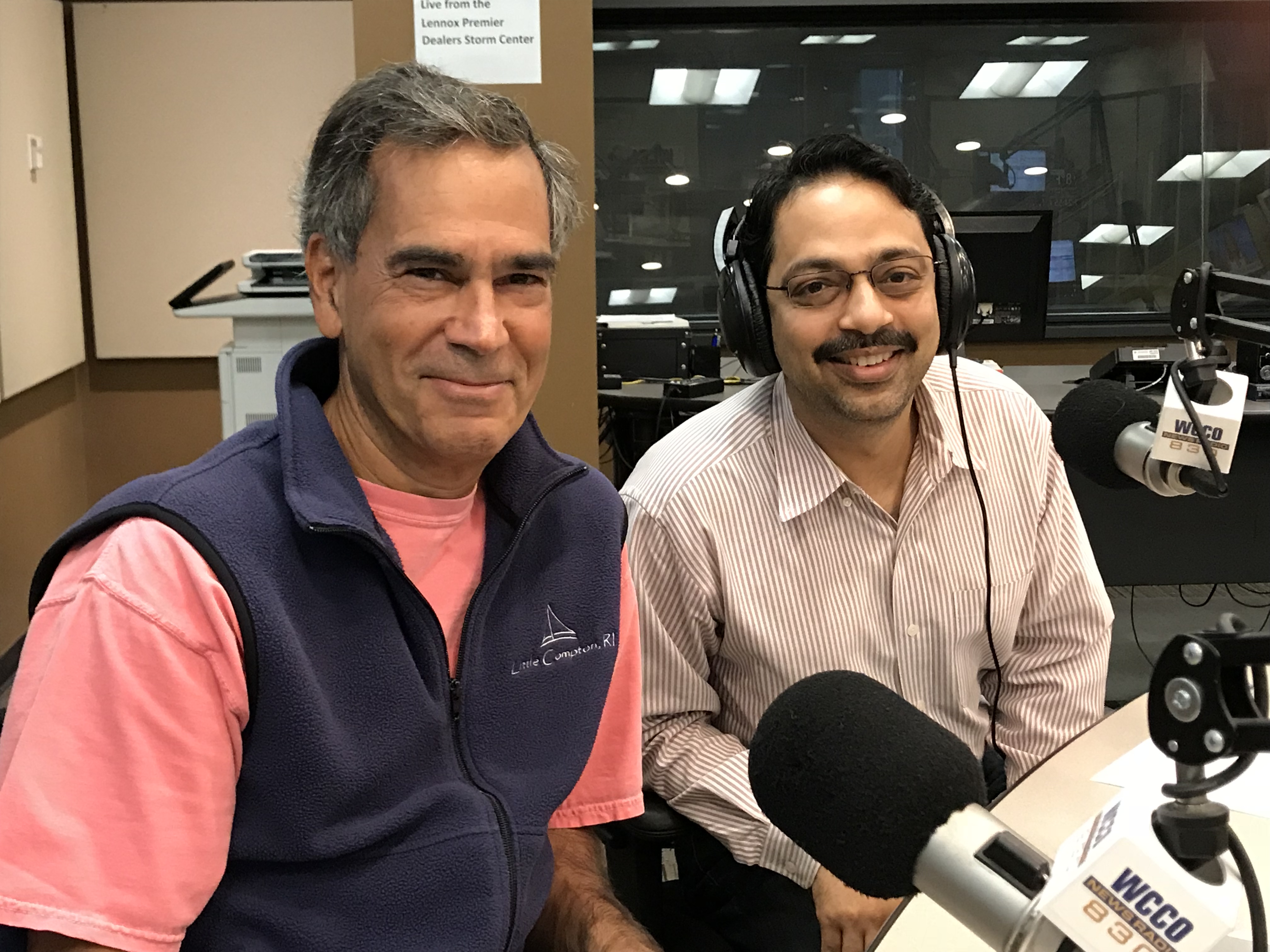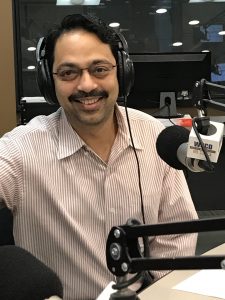CT, PET, MRI, IR, X-ray . . . the world of radiology! Perhaps you’ve encountered some of these tests, maybe had some of them yourself, maybe you even know what these letters mean. For those of us in medicine, imaging studies are a critical and daily part of our work. I order these tests all the time, and when the images show up on my computer screen, I take a look at them and marvel at them. But then I call my radiology colleagues to tell me what I’m really looking at.
At Hennepin Healthcare in downtown Minneapolis the department of Radiology just installed the most advanced MRI machine in the country. Before we launched the new magnet into public use – and “launch” seems the right word since the thing looks like something from NASA – the staff needed to warm the thing up. So I volunteered to have an MRI done.
I had an MRI once before. It was a couple decades ago for a running knee injury. I remember it being cold, loud, lengthy, and rather claustrophobia-inducing.
Not anymore.
The new 3-Tesla MRI scanner at Hennepin’s Clinic and Specialty Center is awesome. First of all, I was welcomed by the staff, then I changed into nice cloth gowns. I got to pick the environment I wanted to be in from a touch screen on the wall. Let’s see, do I want to be on a tropical island, in a forest with pandas, or maybe in an undersea fish scene? I touched “Seychelle Islands” then entered the scanner. The technicians put a visor-like thingie on my face, covered me with a blanket, then the woman with the British accent talked me through the scan while I watched the sea gently roll on the sand of the Seychelles on the screen in front of me.
I never even realized that my body was inside a huge magnet tube. If fact, I fell asleep during my scan.
Three sections in this post if you read on:
- Building the best radiology department right here in downtown Minneapolis. What being patient-centered really means.
- Like wheat in a field. A short physics lesson.
- The role of imaging in a public safety net hospital. Something to get you thinking about healthcare for all people.
Getting an MRI should be about you. Not the doctor or the machine.
 I learned that the new MRI can speak to patients in any one of 26 languages. I selected Italian. Not really. That’s important, though. Getting an MRI is the least normal situation for any of us, and it is awfully reassuring to be talked through it in your own language.
I learned that the new MRI can speak to patients in any one of 26 languages. I selected Italian. Not really. That’s important, though. Getting an MRI is the least normal situation for any of us, and it is awfully reassuring to be talked through it in your own language.
I also learned that the scans are really fast – as few as 10-15 minutes for many scans which used to take twice as long. That’s important to someone who has to lie really still while feeling sick.
And the claustrophobia part? No problem. I actually forgot I was lying in a big magnet as I dozed on the beaches of the Seychelles.
Most important, the images are the superb. I looked at my own body images and it was eerily like taking a look at my own organs from the inside out. In high-def.
That’s my own head in the MRI above and my innards in the MRI below. I have been reassured that yes, indeed, my brain is present and accounted for. I’ll remember that next time I lose my keys.
Getting this MRI done several weeks ago made me want to learn more about MRIs. So I invited two of my colleagues from the Hennepin Healthcare Department of Radiology to join me on the latest Healthy Matters radio broadcast. It was a great show in which we learned a bit of physics, a bit of history, and a bit of medicine.
Listen to the broadcast from the MRI show by clicking the logo below. We even managed to include references to Queen Victoria, Guglielmo Marconi, and Hedy Lamar. Ha! You’ll just have to listen to the podcast to see what I’m talking about.
Click my face above for podcast of Healthy Matters show #492, June 17, 2018
My expert guests on the show were Dr. Chip Truwit and Dr. Gopal Punjabi. Here they are in the WCCO studios:
Dr. Chip Truwit is the Chief of the Department of Radiology and the one responsible for building what I believe to be the best radiology department in our region up here in Minnesota. Keep in mind that Hennepin Healthcare and our hospital – HCMC – is a public safety net system. Now you may have a mental image of what a public safety net hospital looks like. Perhaps you believe that we couldn’t possibly have a decent “X-ray” department. If so, you’d be wrong. It’s a system for everybody!
Here’s a picture from Hennepin’s newest, fastest, 3-Tesla MRI at the Clinic and Specialty Center in downtown Minneapolis:
Here’s another from the Whittier imaging center in south Minneapolis:
This is the best imaging department in the region.
Amber waves of grain. How MRI works.
Also joining me in the studio was one of the smartest and most approachable doctors you will ever meet: Dr. Gopal Punjabi. When Dr. Truwit was building the radiology department at Hennepin, he had to seek out more than fancy machines. He also had to seek out the best doctors, and Dr. Punjabi was one of them.
As a former electrical engineer (yes, I was an engineer before a doctor), I have a bit of a nerdy side to me. Shocking, I know. So I was all geeked out when Dr. Punjabi started explaining how an MRI works. It all has something to do with magnets causing our protons to line up the same direction, then giving off energy when they snap back to their original position, which a computer can then interpret as pictures.
Sort of like wheat blowing in field it would seem. Here’s a podcast except from Dr Punjabi, edited just a bit:
“When you go into an MRI scanner, you are going into a coil of wires. When you run electricity through a coil, you generate a magnetic field . . . and you’re sitting in the middle of that magnetic field. The protons in your body line up with the magnetic field . . . and we send a little energy pulse that changes their orientation. When you take away the pulse, they line up again with the magnetic field . . . giving off a signal.”
It’s that signal that the computer makes into pictures of your body on the screen.
Or as Dr. Truwit describes it, those protons are all lining up like wheat in a field.
Radiology in a safety net health system
I work in a public safety net healthcare system which happens to care for all people. That includes people from across the socioeconomic spectrum, poor folks and rich folks alike. And you know what? The care provided is as good as anywhere else in the region. I mean anywhere.
Our radiology services are part of that reason. My entire family gets its care at Hennepin, including when we need x-rays of any kind. So I asked Dr. Truwit about his department. How is it possible that a public health system can offer radiology services that are as good or better than other systems?
Dr. Truwit has something to say on the issue! I asked him to comment on the role of radiology in a public safety net health care system. Here is what he said, again slightly edited:
“Hennepin Radiology should be setting the bar for all in the region. All citizens of Hennepin County, as well as all who come to HCMC, should benefit from the best, not the least, that we can offer. Public sector care deserves it. I know that is not what everyone thinks, but in my mind, if one is going to do something, one should do it well. I push our people to understand that excellence and patient-centered care are the expectations at Hennepin Radiology.”
I can vouch for what Dr. Truwit says. If you need radiology services, MRI or anything else (they offer CT, ultrasound, mammography, x-rays, and so forth), you should check them out.
Thanks for checking in on my little physics lesson. And thanks to Dr. Truwit and Dr. Gonjabi for sharing their expertise with us.
Subscribe by e-mail below. Leave me a comment. Follow me on Twitter @DrDavidHilden. Love to have you part of the Healthy Matters community!
David








